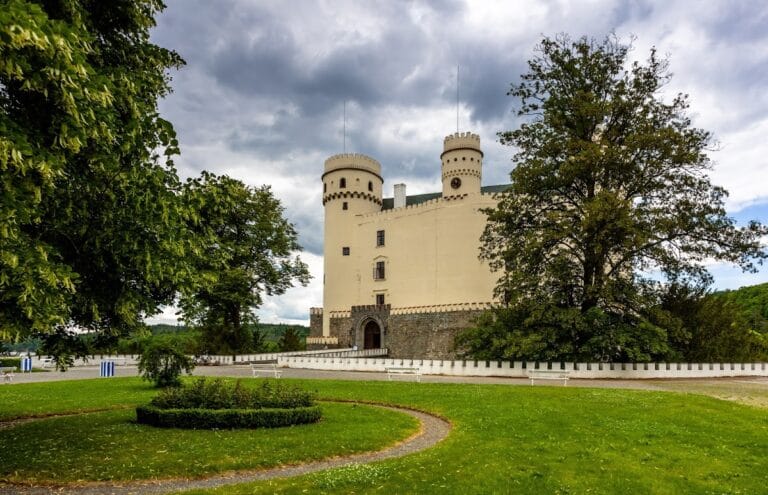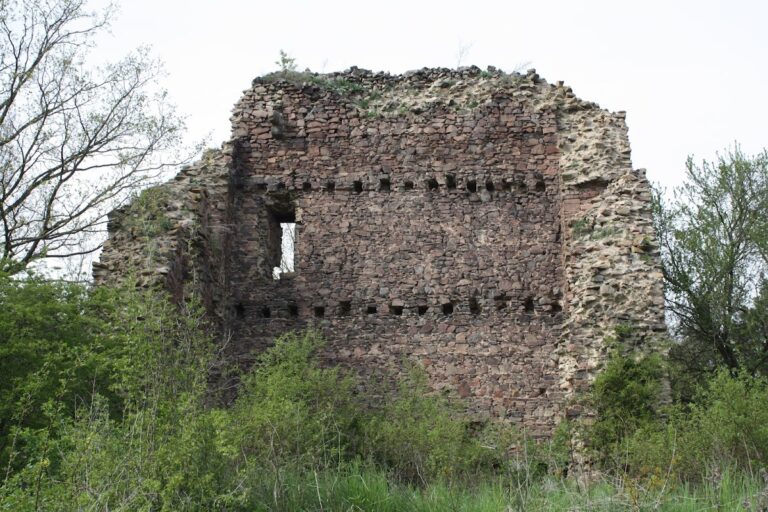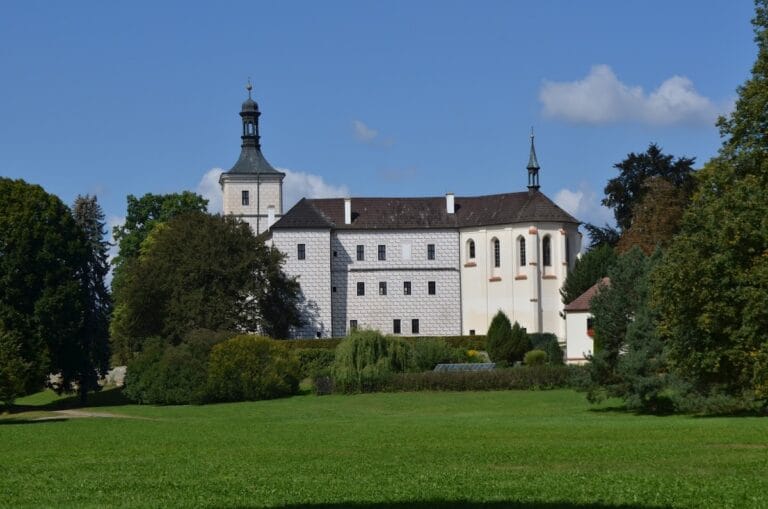Vrškamýk Castle: A Medieval Fortress in the Czech Republic
Visitor Information
Google Rating: 4.6
Popularity: Low
Google Maps: View on Google Maps
Official Website: turistickamapa.cz
Country: Czechia
Civilization: Unclassified
Remains: Military
History
Vrškamýk Castle is a ruined fortress located near the village of Kamýk nad Vltavou in the Czech Republic. It was originally built by the Přemyslid dynasty, an important medieval Bohemian ruling family, likely as a watch and hunting castle towards the end of the 10th century.
The earliest written record of the castle dates back to June 16, 1186, when Duke Friedrich issued a dedication document for the Zwettl Abbey on the site. Its construction was further developed in the early 13th century under King Wenceslaus I. By 1236, Vrškamýk was elevated to the status of a royal castle, serving as an administrative and judicial center that oversaw a wide territory along the left side of the Vltava River, stretching between South Bohemia and the Brdy Forest. King Ottokar II Přemysl completed the castle’s construction and issued several official charters from there, highlighting its significance at the time.
During the 14th century, King John of Luxembourg frequently pawned the castle to various holders. It functioned as a seat for royal officials and archers, who were responsible not only for its defense but also for assisting in royal hunts. However, after Charles IV established Karlštejn Castle in 1357, Vrškamýk gradually declined in importance. The estates and royal hunting authorities associated with it were transferred to Karlštejn and a nearby castle called Vargač near Dobříš. Although it remained an administrative seat for a time, by the late 14th century it passed into the hands of vassals connected to Karlštejn, who managed local royal properties and judicial matters.
In the 15th and 16th centuries, ownership of Vrškamýk frequently changed through pledges and sales among noble families such as the Popel von Lobkowicz, Pernstein, Ungnad von Sonnegg, and Neuhaus. By 1569, historical accounts describe the castle as abandoned. Later archaeological research suggests that the castle was likely deserted shortly after 1306, possibly due to structural issues affecting its rear fortifications that precipitated its early decline and mortgage.
Since 1958, the castle ruins have been officially protected as a cultural monument. Archaeological excavations from 2002 to 2009 provided detailed insights into its past, followed by efforts to conserve what remained and partially reconstruct portions. Near the site, a medieval-themed recreational area now commemorates the castle’s legacy, including an observation tower and playground. The castle is also linked to the local legend of Knight Hunec, a harsh administrator who was killed during a hunt; a chapel once built at the place of his death survives only as walls today.
Remains
Vrškamýk Castle occupies a narrow ridge approximately 345 meters above sea level, overlooking steep valleys formed by the Vltava River and a smaller stream. Its layout is distinctive for its unusually long and narrow shape, divided into two main parts: the front castle and rear castle, both fortified by moats and earthworks. This design represents a notable example of late Přemyslid-era architecture and shares similarities with the somewhat later Bezděz Castle.
The front castle featured a three-sided courtyard surrounded by residential buildings on three sides and a square gate tower on the fourth. The gate tower was connected to a long, narrow building that extended laterally. The tower’s ground floor included a wide entrance passage with seating niches embedded in its side walls and a rib-vaulted ceiling—a vaulted ceiling formed by intersecting rib arches, which was a common medieval architectural feature. Most other interior rooms had flat ceilings, except for one vaulted chamber in a short wing next to the gate tower, probably serving as the chapel. On the first floor, wooden galleries—called pavlatschen—surrounded the courtyard, with impressions of timber chambers visible in the better-preserved south wing. Notably, the castle’s rooms were heated using a central hot air system, indicating a sophisticated approach to comfort and technology for the period. Today, parts of the palace wing’s courtyard-facing walls and internal partitions remain preserved, along with the core structure of the gate tower and a surviving gate to the front castle.
Moving to the rear castle, it was protected by a second moat flanked by defensive walls. Its main gate was located in the ground floor of a square tower featuring a cross-vaulted passage, meaning the ceiling was composed of intersecting barrel vaults forming a sturdy stone construction. This tower closed off the western side of an internal courtyard. Surrounding the courtyard were palace wings of equal width on the southern and northern sides, while a third palace wing enclosed the eastern side. Only the courtyard-facing walls and some interior walls of these buildings have survived. Galleries connected these wings on the first floor, also featuring central hot air heating as seen in the front castle. At least one timber chamber existed within this complex. The short eastern wing included a vaulted room that likely functioned as the castle chapel, mirroring the front castle’s arrangement.
Archaeological investigations carried out in 2009 uncovered elaborately profiled door portals at the castle entrance and a simpler portal opening on the inner side of the gate passage. The seating niches in the gate’s side walls continue to indicate places where guards or gatekeepers could rest or keep watch.
Today, visitors can observe vestiges such as the circular rampart, moats, parts of defensive walls, and the foundations and partial walls of the gate tower and palace wings. The ruins stand as an important record of medieval castle construction techniques and the evolution of royal fortifications in Bohemia. They are also connected to local traditions, including the tale of Knight Hunec and the small ruin of a chapel near the site, marking the place of his legendary death.










